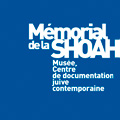
The Shoah Memorial
Introduction
Heir to the Center of Contemporary Jewish Documentation created in 1943 and the Memorial of the Unknown Jewish martyr founded in 1956, the Memorial has been renovated and extended.Inaugurated by President Jacques Chirac, the Shoal Memorial reopened to the public on January 27, 2005 on the sixtieth anniversary of the liberation of Auschwitz and on the European Day of the Holocaust Memory and of the prevention or crimes against Humanity. Located in Paris, in Le Marais district, it is today the reference institution in Europe on the Shoah History.
Understanding the past to brighten the future: this is the mission of the Memorial, which is a museum, a documentation center and a remembrance place all in one. Open to a diversified public, it offers many spaces and activities: a permanent exhibition on the Shoah and the History of French Jews during WWII, a space for temporary exhibitions, an auditorium organizing film screenings, conferences, debates and books presentations. The Wall of Names where there are engraved names of the 76,000 Jewish men, women and children deported from France between 1942 and 1944 under the “Final Solution”, the Wall of the Righteous with the names of 2693 men and women who, at the risk of their life, worked in France to save persecuted Jews, the crypt, a place of meditation where the ashes of victims of Auschwitz and Varsaw ghetto have been placed, the Center for Contemporary Jewish Documentation (several million pages of documents, 1500 meters of shelves, 110,000 photos and 90,000 books and periodicals) and its reading room, the multimedia training center, where anyone can consult audiovisual documents, education spaces where workshops for children and teachers’ trainings take place, and a bookstore. A website displays an extensive online documentation and section for children, aged 8 to 12, entitled “Sarah’s attic” (le grenier de Sarah).
Archives collection
Each year, the Shoah Memorial in Paris collects all types of documents or objects coming from private archives: letters, notebooks, manuscripts, newspapers, leaflets, administrative papers, objects, photos, postcards, drawings, oral testimonies, films, etc... These items are among the most precious assets of a family, often the unique trace of a father, a mother or a loved one, assassinated during the Shoah.Since its inception in 1943, the Center for Contemporary Jewish Documentation (CDJC) has never stopped collecting documents testifying to the fate of European Jews, especially in France, during WWII and related to the history of Jewish communities before and after the Shoah.
Today the CDJC is an integral part of the Shoah Memorial. Your memories are the archives of tomorrow. Private archives shed another light on History and contribute to the actions of information and education, especially directed towards young audiences.
By keeping these documents and spreading knowledge and information about them to a greater number of people through historical exhibitions, films, documentaries, academic works or publications, the Shoah Memorial preserves forever the memory of your loved ones, their history, their face.
